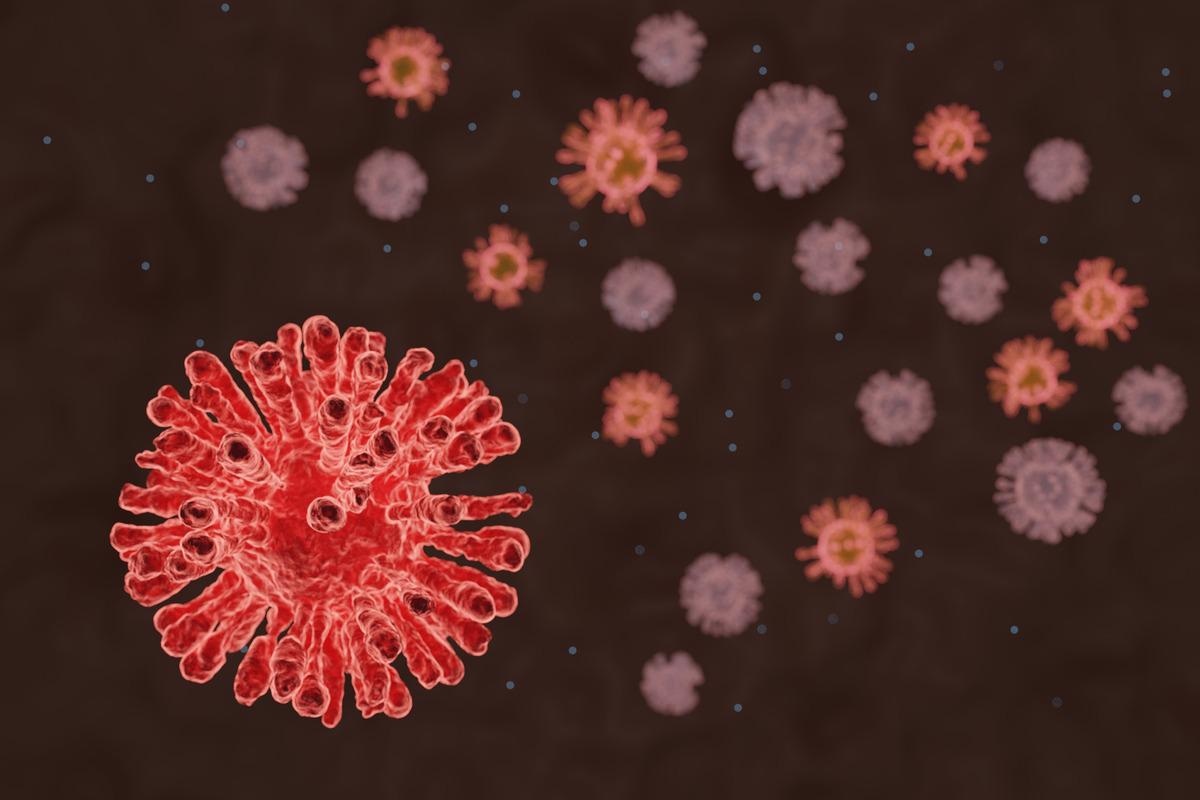Researchers explore furin inhibitors as a potential tool for treating COVID-19 infection

Furin is a protease enzyme that helps inactive proteins move to a biologically active state. In viruses, furin can cleave sites that help to make the virus more infectious.
A recent article, published in the journal Pharmacological Reports, suggests that coronaviruses such as severe acute respiratory syndrome coronavirus 2 (SARS-CoV-2) depend on a furin cleavage site between the S1/S2 subunits to enhance viral infectivity.

The authors argue that furin inhibitors are a potential tool for targeting a key player in SARS-CoV-2’s viral infection lifestyle. Doing so can significantly reduce the viral spread in human cells.
Role of furin and mechanism of action for viral infection
Most studies investigating SARS-CoV-2 infection look at the relationship between the spike protein and the ACE2 receptor as a point for viral entry. However, other human coronaviruses — human coronavirus 229E and dipeptidyl peptidase 4 — use aminopeptidase N as entry receptors. During infection, the spike protein is cut up into subunits S1 and S2 subunits.
Subunit S1has the receptor-binding domain that is used to bind ACE2. The process of cleaving glycoproteins and eventual binding may need the help of enzymes such as subtilisin-like endoproteases or trypsin endoproteases. One type of endoprotease is furins/proprotein convertase subtilisin/kexin proteins which are calcium-dependent and found in the human body.
Furin is a transmembrane that helps cleave the spike protein, which has helped respiratory viruses such as the Middle East respiratory syndrome coronavirus (MERS-CoV) turn inactive proteins into active ones that promote infection.
Through endosomal translocation, furin is expressed in the cell membrane and the trans-Golgi network. After cleavage, furin can be found as an active enzyme in the extracellular space.
Research has shown that SARS-CoV-2 has a cleavage site of four amino acids between the S1 and S2 subunit of the S glycoprotein — similar but not exact to the cleavage site seen in MERS-CoV.
The insert has a functional furin cleavage motif at the S1/S2 site, which may allude to an important role in SARS-CoV-2 viral entry into human cells. Although, the authors do note that furin is not essential for viral entry. The SARS-CoV-2 spike protein has more than one cleavage site and also depends on other proteases, such as transmembrane protease, serine 2 (TMPRSS2).
While SARS-CoV-2 does not need furin to carry out viral entry into host cells, it makes the cleavage process more efficient. Therefore, furin inhibitors may significantly reduce viral spread but not prevent it altogether.
Because other viruses besides SARS-CoV-2 rely on furin, a furin inhibitor could possess broad-spectrum antiviral effects.
Furin inhibitors for the potential treatment of COVID-19 infection
Given the importance of furin for optimizing viral infectivity processes, treatments targeting furin may help limit the spread of SARS-CoV-2. The researchers argue that furin antagonists could suppress infections two-fold. Not only would SARS-CoV-2 have a harder time getting into cells, it would also give the immune system more time to track down and eliminate the virus.
Non-peptide compounds, pure peptides, and peptides mimetics are able to inhibit furin could potentially be repurposed as a COVID-19 treatment. However, using peptides comes with certain disadvantages such as its limited absorption in the intestinal tract and the instability of free peptides.
Some macrocyclic peptidomimetic drugs are available and have been shown to block furin by binding to its active site. However, these drugs were not shown to inhibit viral replication.
Another peptidomemetic molecule called dec-RVKR-cmk is created from choromethyl keton and is a furin convertase inhibitor. They bind to the catalytic site and can stop the spread of viruses that depend on furin for infectivity. Chemical modifications to this furin inhibitor such as changing the C-terminal with decarboxylated arginine mimetics may enhance its effectiveness.
Furin relies on the specific amino acid side chain in the cleavage site. Understanding that furin needs an arginine residue in P1 and at least two residues of arginine and lysine in positions P2, P4, and P6 could help in designing potent protein-based inhibitors.
Beyond proteins and peptides, small molecule-based competitive furin inhibitors are available and do not have any stability issues.
Furin is negatively charged so having positively charged inhibitors such as Guanidinylated Aryl 2,5-Dideoxystreptamine Derivatives (GADDs) could promote antiviral effects.
- Devi KP, et al. (2022). A perspective on the applications of furin inhibitors for the treatment of SARS-CoV-2. Pharmacological Reports. doi: https://doi.org/10.1007/s43440-021-00344-x https://link.springer.com/article/10.1007/s43440-021-00344-x
Posted in: Medical Science News | Medical Research News | Disease/Infection News
Tags: ACE2, Amino Acid, Arginine, Calcium, Cell, Cell Membrane, Coronavirus, Coronavirus Disease COVID-19, covid-19, Drugs, Enzyme, Glycoprotein, Immune System, Lysine, Membrane, MERS-CoV, Molecule, Peptides, Protein, Receptor, Research, Respiratory, SARS, SARS-CoV-2, Serine, Severe Acute Respiratory, Severe Acute Respiratory Syndrome, Spike Protein, Syndrome, Virus

Written by
Jocelyn Solis-Moreira
Jocelyn Solis-Moreira graduated with a Bachelor's in Integrative Neuroscience, where she then pursued graduate research looking at the long-term effects of adolescent binge drinking on the brain's neurochemistry in adulthood.
Source: Read Full Article